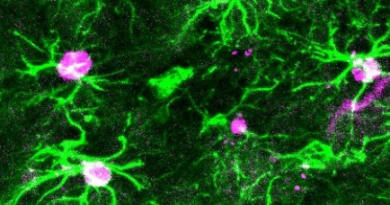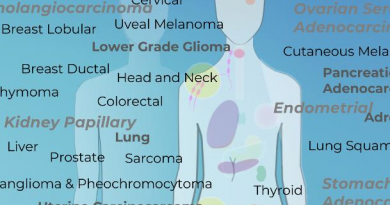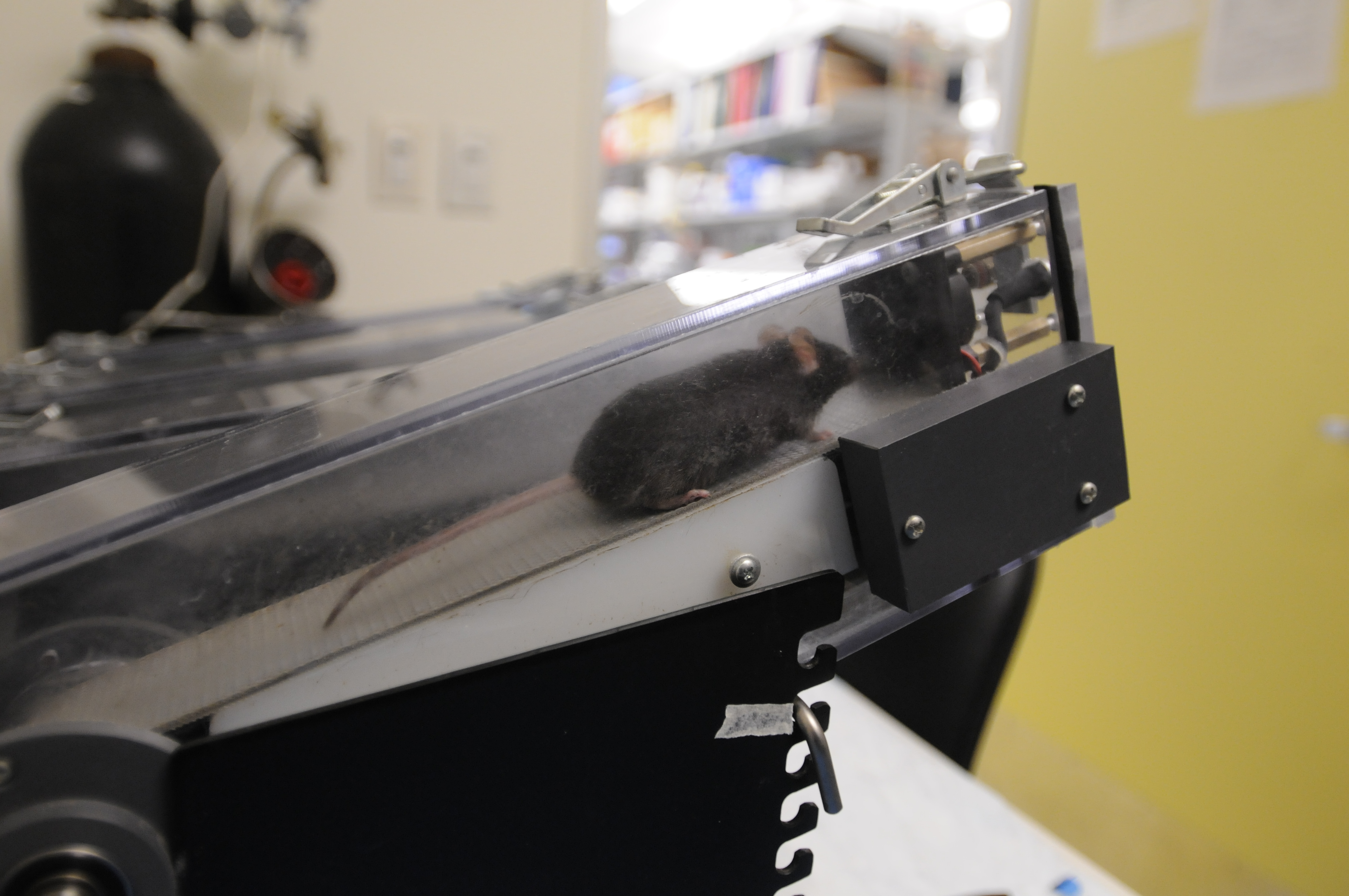Zooming in on the architecture of DGAT1, a transmembrane lipid factory
Triglycerides are lipids that are part of the particles that transport cholesterol – high-density lipoproteins (HDL, or ‘good cholesterol’), and low-density and very-low-density lipoproteins (LDL and VLDL, or ‘bad cholesterols.’) They also are the main component of hard fat, the type of fat usually found in the midsection in our body. They are one of the lipids in the blood doctors insist we must keep at low levels to reduce the risk of heart disease, diabetes, obesity and fatty liver disease.
When Lie Wang, a Baylor graduate student in the lab of Dr. Ming Zhou, was looking for a project for his graduate thesis he realized that, despite the importance of triglycerides, scientists still did not understand how the enzyme that makes them, DGAT1, worked.
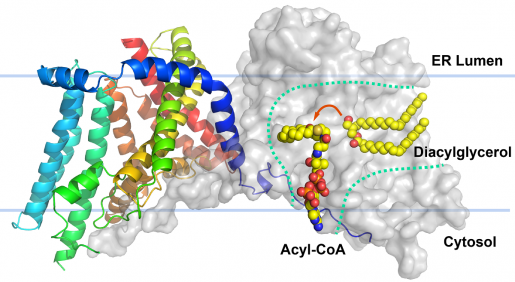
“Learning to regulate this enzyme can help regulate fat synthesis and potentially manage related conditions,” Wang said. “DGAT1, or diacylglycerol O-acyltransferase-1, is a known target to treat obesity and other metabolic diseases, so having a detailed understanding of what DGAT1 looks like and how it works opens opportunities for designing novel strategies for managing these conditions.”

Wang took the lead on this project. He applied cryo-electron microscopy, a technique that enables scientists to see how biomolecules move and interact as they perform their functions, to visualize the 3-D structure of DGAT1.
“This project was challenging because DGAT1 is embedded in biological membranes where it carries its function,” Wang said. “We also developed an enzymatic assay to monitor the activity of DGAT1 in real time. Thanks to the integration of high-quality structure and precise functional studies we were able to unveil the 3-D architecture of this important enzyme and gain novel insights into the mechanism of action.”
DGAT1 is located in the membrane of the endoplasmic reticulum, a cellular structure engaged in the synthesis of proteins and lipids.
“It was exciting to discover that DGAT1 forms a large chamber inside the membrane, which was unexpected,” Wang said. “This ‘reaction chamber’ isolates a space within the membrane where the enzymatic synthesis of triglycerides takes place.”
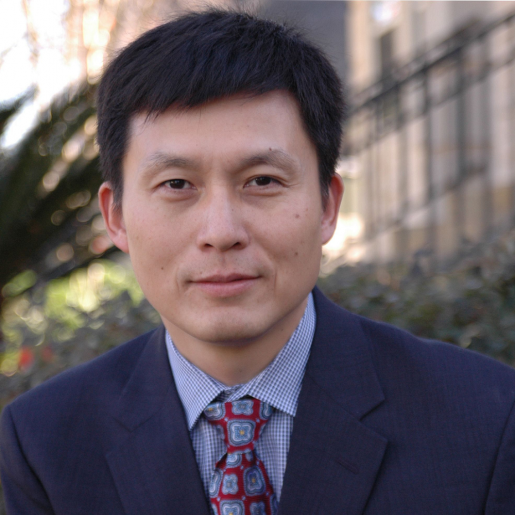
“The reactants meet inside the chamber and that is where the reaction occurs. Then, the triglycerides bud-off the membrane in lipid droplets that carry them to where they are needed in the cell,” said Zhou, Ruth McLean Bowman Bowers Professor in Biochemistry in the Department of Biochemistry and Molecular Biology at Baylor. “Neither this 3-D structure of DGAT1 nor its mechanism of action were known before in such detail.”
This study not only reveals the structure and mode of action of a human enzyme that is essential for human metabolism, but it also enables researchers to explore the effects of molecules that interact with DGAT1 and potentially regulate its activity.
Read all the details of this discovery in the journal Nature and visit the Zhou lab to learn about their other exciting projects.
Hongwu Qian, Yin Nian, Yimo Han, Zhenning Ren, Hanzhi Zhang, Liya Hu, B. V. Venkataram Prasad, Arthur Laganowsky and Nieng Yan also contributed to this work. The authors are affiliated with Baylor College of Medicine, Princeton University and Texas A&M University.
This study was supported by grants from the NIH (DK122784, HL086392 and GM098878), the Cancer Prevention and Research Institute of Texas (R1223), the Robert Welch Foundation (Q1279), the Ara Parseghian Medical Research Foundation and the New Jersey Council for Cancer Research. Additional support was provided by the Shirley M. Tilghman endowed professorship from Princeton University, the Princeton Center for Complex Materials and the National Science Foundation (NSF)-MRSEC program (DMR-1420541).

